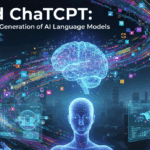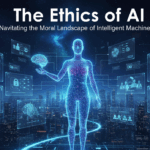Artificial Intelligence (AI) often conjures images of futuristic robots, self-driving cars, or complex systems used by scientists and tech giants. While these applications are indeed part of the AI landscape, the truth is far more pervasive and, in many ways, surprisingly mundane. AI isn’t just a distant technological marvel; it’s an invisible thread woven into the fabric of our daily routines, quietly enhancing our experiences and making our lives easier, safer, and more connected.
You might not even realize it, but from the moment you wake up to the time you go to bed, you’re constantly interacting with AI. This article will pull back the curtain on these hidden integrations, revealing the unexpected ways artificial intelligence is already an indispensable part of your everyday life.
The Morning Routine: AI’s Subtle Wake-Up Call
Your day likely begins with AI, often before you’ve even had your first cup of coffee.
Your Smartphone: The Ubiquitous AI Companion
-
Alarm and Calendar Management: Many alarm apps now use AI to learn your sleep patterns and suggest optimal wake-up times, or even gently adjust your alarm based on your schedule to ensure you’re not too rushed. Calendar apps leverage AI to predict meeting durations, suggest travel times based on real-time traffic, and even identify conflicting appointments.
-
Facial Recognition/Fingerprint Unlocking: The moment you unlock your phone with your face or fingerprint, you’re engaging with AI. These biometric security systems use sophisticated algorithms to identify unique patterns and grant access, learning and adapting to minor changes over time.
-
Personalized News Feeds: As you scroll through your news apps or social media, AI algorithms are constantly working behind the scenes. They analyze your past interactions (what you clicked, liked, shared, or spent time reading) to curate a personalized feed, showing you content they predict you’ll find most engaging.
-
Weather Predictions: Weather apps don’t just pull raw data; they use AI models to analyze vast amounts of atmospheric data, satellite imagery, and historical patterns to provide increasingly accurate local forecasts, including real-time rain predictions.
Smart Home Devices: AI in Your Living Space
-
Smart Speakers (Alexa, Google Assistant, Siri): These devices are prime examples of AI in action. When you say “Good morning, Alexa, what’s the weather like?” AI is performing Natural Language Processing (NLP) to understand your spoken command, fetching the information, and then generating a human-like spoken response. They learn your voice, preferences, and even your habits over time.
-
Smart Thermostats (e.g., Nest): These devices don’t just adjust temperature; they learn your schedule, your temperature preferences throughout the day, and even integrate with weather forecasts to optimize your home’s heating and cooling. This saves energy and keeps you comfortable, all thanks to AI’s predictive capabilities.
-
Smart Lighting: AI can learn your habits, adjusting light levels based on time of day, natural light availability, and your presence in a room. Some systems even simulate sunrise to wake you up more gently.
Commuting and Travel: AI Guiding Your Journey
Whether you’re driving, taking public transport, or planning a trip, AI is working to make your commute smoother and safer.
Navigation Apps: Your Intelligent Co-pilot
-
Real-time Traffic Updates: Google Maps, Apple Maps, and Waze use AI algorithms to analyze enormous amounts of real-time data from millions of users, road sensors, and historical patterns to predict traffic congestion, suggest the fastest routes, and estimate arrival times. They can even factor in accidents or road closures and reroute you instantly.
-
Public Transit Optimization: AI helps public transportation systems optimize schedules, predict delays, and even manage crowds by analyzing rider data and real-time conditions.
-
Ride-Sharing Services (Uber, Lyft): AI algorithms are crucial here for matching riders with drivers, optimizing routes for efficiency, calculating fares, and dynamically adjusting prices based on demand and supply.
Vehicle Technology: Beyond the Driver’s Seat
-
Adaptive Cruise Control: Many modern cars use AI-powered sensors (radar, cameras) to maintain a safe distance from the vehicle in front, automatically adjusting speed.
-
Lane Keeping Assist: AI systems monitor lane markings and gently steer the car to keep it centered in its lane, preventing accidental drifts.
-
Parking Assist: AI helps cars identify suitable parking spots and often automates the steering for parallel or perpendicular parking.
-
Blind Spot Monitoring: AI-powered sensors detect vehicles in your blind spots and alert you, enhancing safety.
-
Infotainment Systems: Voice commands for navigation, music, or calling are processed by AI for understanding and execution.
Work and Productivity: AI as Your Invisible Assistant
In the workplace, AI is increasingly becoming an indispensable tool, streamlining tasks and enhancing collaboration.
Email and Communication: Smarter Inbox Management
-
Spam Filters: AI is the unsung hero that keeps your inbox relatively clean. Sophisticated machine learning algorithms analyze incoming emails for patterns, keywords, and sender behavior to identify and filter out spam and phishing attempts.
-
Smart Reply/Predictive Text: Gmail’s “Smart Reply” suggestions and predictive text features in messaging apps use AI to anticipate your responses and help you compose messages faster.
-
Email Prioritization: Some email clients use AI to learn what’s important to you, automatically sorting emails into categories (e.g., “Primary,” “Promotions,” “Social”) or highlighting urgent messages.
-
Grammar and Spell Checkers: Advanced tools like Grammarly use AI to not just correct typos but also suggest stylistic improvements, tone adjustments, and clearer phrasing.
Cloud Services and Data Management
-
File Search and Organization: Cloud storage services often use AI to make files more searchable, recognizing objects in images, extracting text from documents, and suggesting ways to organize your data.
-
Data Analysis: Business intelligence tools leverage AI to identify trends, create predictive models, and offer insights from vast datasets, enabling smarter business decisions.
Meeting Tools: Enhanced Collaboration
-
Transcription Services: AI can accurately transcribe spoken words from virtual meetings, often identifying different speakers, making meeting notes automatic and searchable.
-
Background Noise Suppression: AI algorithms intelligently filter out distractions like keyboard typing, barking dogs, or traffic noise during video calls, improving audio clarity.
Entertainment and Media: AI Curating Your World
From what you watch to what you listen to, AI is constantly tailoring your entertainment experience.
Streaming Services: The Algorithm Knows Best
-
Personalized Recommendations: Netflix, Spotify, YouTube, and other streaming platforms are masters of AI-driven personalization. They analyze your viewing/listening history, ratings, watch patterns, and even what other users with similar tastes enjoy to suggest movies, shows, and music you’re highly likely to love. This keeps you engaged and discovering new content.
-
Content Optimization: AI helps these services optimize video quality based on your internet connection, predict server loads, and even manage content delivery networks for smooth streaming.
Social Media Feeds: Curated for Engagement
-
Algorithmic Feeds: Whether it’s Facebook, Instagram, TikTok, or X (formerly Twitter), your feed isn’t chronological. AI algorithms determine which posts, videos, or tweets you see, aiming to maximize your engagement by showing you content that aligns with your perceived interests and past interactions.
-
Content Moderation: AI plays a significant role in identifying and flagging inappropriate content, hate speech, or misinformation on these platforms, though human oversight is still crucial.
Gaming: Smarter Opponents and Worlds
-
Non-Player Characters (NPCs): In video games, AI controls the behavior of computer-controlled characters, making them seem more intelligent, adaptive, and challenging.
-
Procedural Content Generation: Some games use AI to procedurally generate vast worlds, quests, or even entire narratives, creating unique experiences for each player.
-
Matchmaking: Online multiplayer games use AI to match players of similar skill levels, ensuring fair and enjoyable competition.
Shopping and E-commerce: AI Making Purchases Smarter
AI is transforming how we discover, evaluate, and purchase products and services.
Online Shopping Platforms: Your Personal Shopper
-
Product Recommendations: Similar to streaming services, e-commerce sites like Amazon use AI to suggest products based on your browsing history, past purchases, items in your cart, and products viewed by similar customers.
-
Personalized Search Results: Your search results might be subtly different from someone else’s, tailored by AI to what the algorithm believes you’re more likely to buy.
-
Dynamic Pricing: AI algorithms can adjust product prices in real-time based on demand, competitor prices, inventory levels, and other market factors.
-
Customer Service Chatbots: Many online stores use AI-powered chatbots to answer common questions, provide order updates, and resolve basic customer service issues 24/7.
-
Visual Search: Some apps allow you to take a photo of an item you like, and AI will find similar products available for purchase.
Fraud Detection: Protecting Your Transactions
-
Credit Card Companies: Banks and credit card companies use sophisticated AI systems to monitor transactions in real-time, looking for unusual patterns that could indicate fraudulent activity. A sudden purchase in a foreign country or a very large transaction might trigger an AI alert, leading to a quick phone call to verify.
Health and Wellness: AI Supporting a Healthier You
AI is increasingly playing a role in helping us manage our health and well-being.
Wearable Devices: Your Health Monitor
-
Fitness Trackers (Smartwatches, Fitbits): These devices use AI to analyze data from sensors (heart rate, movement, sleep patterns) to provide insights into your health. They can track steps, estimate calories burned, monitor sleep quality, and even detect irregular heart rhythms.
-
Personalized Health Insights: AI can take your data and offer personalized suggestions for improving sleep, increasing activity, or managing stress.
Digital Health Apps: Guidance at Your Fingertips
-
Mental Wellness Apps: Some apps use AI to provide personalized meditation exercises, cognitive behavioral therapy techniques, or even just supportive conversational interactions based on your input.
-
Diet and Nutrition Trackers: AI can help analyze your food intake, track macros, and offer personalized meal suggestions based on your health goals.
Security and Safety: AI’s Watchful Eye
AI contributes significantly to keeping us safe, often without us realizing it.
Cybersecurity: Fighting Digital Threats
-
Antivirus Software: Modern antivirus programs use AI to detect new and evolving malware threats that haven’t been seen before, analyzing behavior patterns rather than just relying on signature databases.
-
Network Intrusion Detection: AI monitors network traffic for suspicious activities, identifying potential hacking attempts or data breaches.
Public Safety and Surveillance
-
Smart City Initiatives: AI-powered cameras in cities can detect unusual crowd movements, identify abandoned packages, or monitor traffic flows for accident prevention. (Note: This also raises important privacy concerns that are actively debated).
-
Facial Recognition for Security: Used in airports and other secure locations for identity verification.
Beyond the Obvious: Miscellaneous AI Integrations
-
Translation Services (Google Translate, DeepL): When you use these services to translate text or speech, powerful AI models are performing complex linguistic transformations.
-
Photo Editing Apps: Features like automatic photo enhancement, object removal, or smart cropping use AI to analyze images and make intelligent adjustments.
-
Voice-to-Text Dictation: The ability to speak into your phone or computer and have it accurately transcribe your words is a feat of AI’s NLP capabilities.
-
Marketing and Advertising: AI is used extensively to target advertisements to specific demographics, optimize ad spend, and predict consumer behavior.
Conclusion: Embracing the Invisible Revolution
It’s clear that AI is no longer a technology of the future; it’s a fundamental part of our present. From the mundane convenience of spam filters to the life-saving potential of medical diagnostics, AI is quietly, yet profoundly, enhancing nearly every aspect of our daily lives.
While the conversation around AI often focuses on its grand potential or its ethical challenges, it’s equally important to acknowledge its current, embedded reality. This ubiquitous presence underscores AI’s immense utility and impact, making our digital interactions smoother, our devices smarter, and our world more connected. The next time you unlock your phone, ask a question to your smart speaker, or get a movie recommendation, remember that you’re experiencing the quiet, powerful revolution of artificial intelligence, an invisible assistant working tirelessly behind the scenes.


